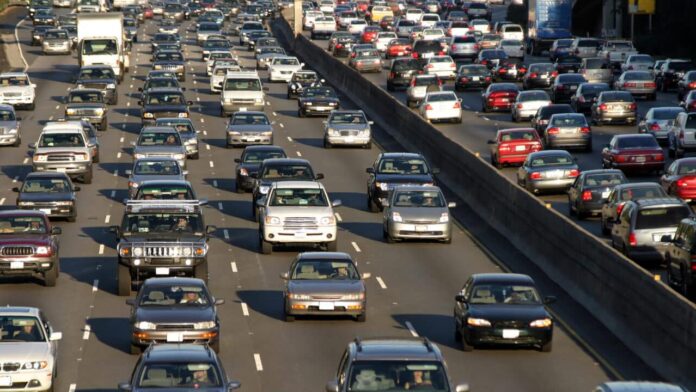The average American spends an average of 234 hours and $8,189 to wake up early and sit in traffic, on their commute every year.
Join our WhatsApp groupSubscribe to our Daily Roundup Email
A study by Clever Real Estate reveals that while commuting is a nationwide drag, some parts of the country enjoy better — or worse — commutes compared to the norm.
The study considered hours lost to traffic, the percentage of workers who work remotely, the availability of public transit, the time it takes to get to work, fuel and maintenance costs, and the condition of local roads, among other factors. Overall, the study found that the worst commuting cities in America are primarily in the South and West, with less onerous commutes in the North and Midwest.
Commuting Headaches in The South and West
Where bad commutes are concerned, the southern and western regions of the country have the unfortunate designation of being traffic-choked time sucks.
Of the 10 worst cities for American commuters, six are in Texas, Georgia, California, or Florida. Both Texas and California have two cities that are miserable for commuters. Houston and Dallas are the worst offenders in Texas, while Los Angeles and Riverside cause the commuting headaches in California. Other repeat offenders are Atlanta and sun-splashed Miami.
Living in one of the worst American cities for commuters has actual costs for residents. Commuters in the bottom 10 cities spend, on average, 26% more of their income on commutes than the average U.S. commuter. They also spend 17% more than the average American on fuel and 73% more on insurance premiums.
Just consider some of the lowlights of the bottom 10 commuting cities. In Los Angeles, a commuter loses an average of 95 hours to traffic, nearly double the national average of 51 hours. In Dallas, fuel costs run $978 – $215 more than the national average. In Miami, the average insurance premium clocks in at $3,938 – more than double the national average of $1,759.
In some of these cities, the method of transportation commuters choose can radically impact their experience. For example, New York is ranked the ninth worst commuting city, mainly because its residents lose 117 annual hours to traffic — the second-worst in the country. On the other hand, New York has the best public transit score in the country, with an 89 out of 100.
Houston Is the Worst
According to Clever’s study, there’s no worse place to be an American commuter than Houston.
Texas may be known for energy production, but the average worker in Houston spends $933 per year on fuel — 22% more than the American average. After breaking the bank to fill up their tanks, Houstonians don’t even have smooth driving ahead, as major roads in Houston are 53% more likely to be in poor condition than those in a typical American city.
Perhaps most unfortunate is that despite high property values, most people in Houston don’t have good options to avoid high fuel costs and crumbling roads when they commute. The study found Houston to have a poor public transit score of 36, which is significantly lower than the average score of 42.
Quick Commutes, Low Costs, Limited Traffic
Americans seeking opportunity were told to, “Go West, young man,” but those seeking a positive commuting experience should take different advice and go to the North and Midwest.
According to the study, seven of the 10 best commuting cities in the U.S. are in the North or Midwest. Ohio alone has three of the 10 best American commuting cities in Columbus, Cleveland, and Cincinnati.
Cities in the North and Midwest tend to stand out on two commuting factors. The first is price. Low costs are enjoyable in all facets of life, including groceries, childcare, and real estate, and many cities in the North and Midwest have low commuting costs.
Consider Columbus, where the annual car insurance premium is $1,350, compared to the $1,759 national average. In Milwaukee, commuters spend $603 yearly on fuel — $160 less than the average American city. Cincinnati’s commuters keep more money in their pockets, as well, retaining $754 more dollars every year than the average commuter in the U.S.
The second reason the North and Midwest offer pleasant commutes is time. Commuters in these regions spend less time in traffic. Throughout much of the North and Midwest, average one-way commutes are under 30 minutes. In Buffalo, the average one-way commute is only 22 minutes, which is a big part of why the City of Good Neighbors is the second-rated commuter city in the U.S.
The top-ranked city in the study, Salt Lake City, isn’t in the North or Midwest. Like other cities in the West and South with favorable commuter rankings, Salt Lake City is boosted in the study by the fact that many workers don’t commute at all. 12.5% of workers in Salt Lake City work from home — 29% more than workers in the average American city.
This article was produced by Clever Real Estate and syndicated by Wealth of Geeks.


All the chachomim that abandoned their Rav and kehilla in Brooklyn and fled to Lakewood, even though they work in the City, now have the tremendous honor of sitting in rush hour traffic, both directions, in order to get to and from work. They spend a minimum of 3+ hours every single day sitting in their vehicles. Mamesh brilliant. But at least it will say on their tombstone that they died in Lakewood. Ashreicha.